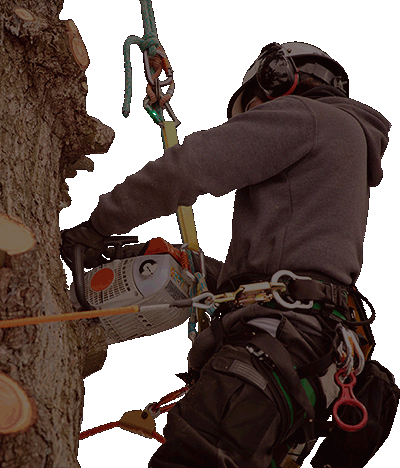
A wet spring may seem like Mother Nature’s gift to our landscape. After all, Spartanburg trees are soaking in all the water they can as they wake up for the season.
But fungi love warmer temps and rain even more than our plants. To keep your Spartanburg trees and plants healthy this spring, prevention is often the best protection against diseases caused by fungi. The earlier you spot a problem, the better.
Below, find symptoms of common Spartanburg tree diseases to look out for this spring – and learn what to do if you find them.
4 Common Tree Diseases Caused by Fungi During a Wet Spring
Don’t know where to begin diagnosing your tree? Leaves and needles typically tell what condition you're dealing with.
1. Tree leaves are brown near the vein - or have brown or yellow blotchy spots
 These are symptoms of anthracnose. Early leaf drop can occur in the worst-case scenario. Luckily, a proper Spartanburg tree care regimen can stop anthracnose before it does significant damage. Read more about managing anthracnose.
These are symptoms of anthracnose. Early leaf drop can occur in the worst-case scenario. Luckily, a proper Spartanburg tree care regimen can stop anthracnose before it does significant damage. Read more about managing anthracnose.
2.  Apple Spartanburg tree leaves have spots – then turn pale and drop too early
Apple Spartanburg tree leaves have spots – then turn pale and drop too early
Your Spartanburg tree is likely suffering from apple scab. Also, the leaf color doesn’t fade right away. The leaves first have yellow dots, then become dark green and dark brown. You can treat apple scab on your Spartanburg trees in a few ways, and with help, your Spartanburg tree can recover!
3. Oak leaves are wilted, brown or fell off after pruning
 That sounds like oak wilt. To be completely sure, scrap a piece of bark off a branch. Streaking under the bark is a distinct symptom of oak wilt. Oak wilt quickly spreads to other oak Spartanburg trees in your yard, so learn what you should do here. And avoid pruning oak Spartanburg trees from April through August because this can increase your tree’s risk of oak wilt.
That sounds like oak wilt. To be completely sure, scrap a piece of bark off a branch. Streaking under the bark is a distinct symptom of oak wilt. Oak wilt quickly spreads to other oak Spartanburg trees in your yard, so learn what you should do here. And avoid pruning oak Spartanburg trees from April through August because this can increase your tree’s risk of oak wilt.
4.  Needles on your spruce Spartanburg tree turn bright yellow, then brown
Needles on your spruce Spartanburg tree turn bright yellow, then brown
This is likely rhizosphaera needle cast. Eventually, the brown needles will drop prematurely. Learn how to help your Spartanburg tree by treating and managing needle cast. Without help, this can kill your Spartanburg trees within a few years.






